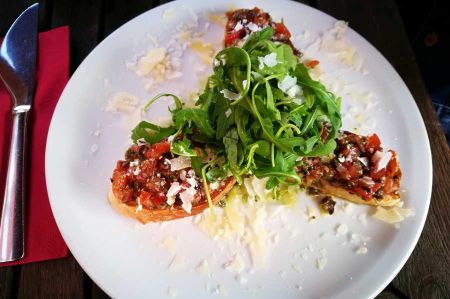Italian appetizer Bruschetta - far more than just antipasti
- Written by Portal Editor
What in Turkish is called meze, with comparable mezze in Persian regions, in Italian are called antipasta, small dishes, often served in small bowls, which are consumed on various occasions.
They can be part of a delicious snack, an appetizer (hors d'oeuvre) or as a dessert part of a meal. In many of the successor states of the Ottoman Empire and its neighboring states in the Caucasus, this food offer or the term and the associated tradition is widespread. True gourmets often abstain from the main course and can be served a larger number of different meze on a tray, from which they then make a selection - why not?
Bruschetta, on the other hand, is clearly one of the Italian antipasti, that is, a real starter. Originally called "Poor People Eating", the "dish" comes from Central and Southern Italy. Actually, only freshly toasted bread, such as Pane Pugliese, which has a fairly hard crust and rubbed warm with a halved garlic clove and then drizzled with olive oil, still peppered and salted at will and immediately consumed.
An already modified, modern form as a real appetizer of Bruschetta is often provided with a coating that consists of some variants depending on the region and preference:
- The most common is a topping with chopped tomatoes and fresh basil (Bruschetta con pomodoro e basilico). Skinned tomatoes are diced (the core is removed) and mixed with garlic, basil, olive oil and some salt and pepper. The bread is roasted and topped shortly before serving with the tomato-garlic mix. This version is very common in Tuscany and the Naples area, but is often offered in Italian restaurants in northwestern Europe.
In Tuscany, Bruschetta con pomodoro e basilico is also made with unsalted bread (Pane Sciocco) and is then called Fettunta.
In the Abruzzi around Pescara Bruschetta it is also eaten with ham, and with arrosticini (grilled mutton cubes) it is considered a specialty there.
In Calabria, bruschetta is called fedda ruscia (roasted slice of bread) and is eaten with olive oil, salt, pepper and oregano or paprika.
A variant of the Catalan cuisine is Pa amb tomàquet.
Please read as well:
Lilac - not just gorgeous flowers and scents
The real New York Cheese Cake - a travelogue followed
